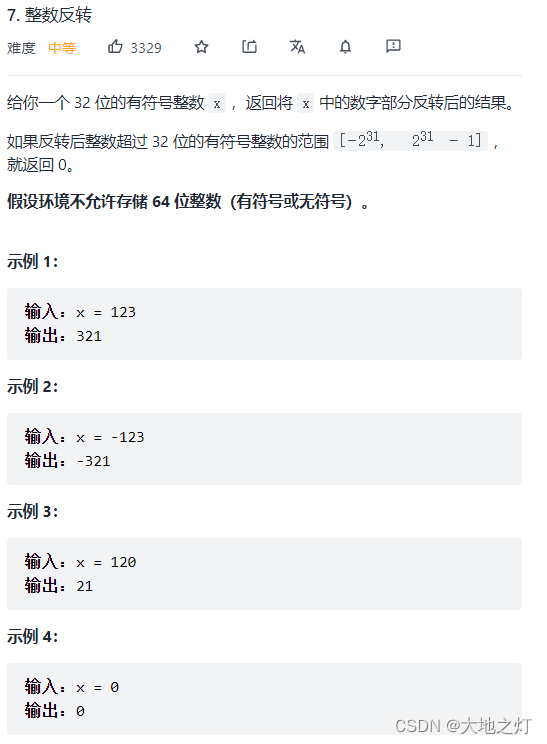@[TOC]目录
题目概述


题目解析及代码
分析:
"""
整数范围的具体值
print(int(-2**31),# -2147483648
bin(-2**31),# -0b10000000000000000000000000000000
int(2**31-1),# 2147483647
bin(2**31-1)) # 0b1111111111111111111111111111111
"""
方法一:字符串倒置
def reverse(x:int) ->int:
if -10 < x < 10:
return x
str_x = str(x)
if str_x[0]=='-':
str_x = str_x[:0:-1] #删除第一个字符(也就是符号位)倒序打印
x = int(str_x)
x = -x
else:
str_x = str_x[::-1]
x = int(str_x)
return x if -2147483648 < x < 2147483647 else 0
print(reverse(123))
方法二:每次在末尾添加一位数并判断其是否越界(-231 , 231-1)
此方法并不会很大的提升效率,通过Python的二进制数的表示可以发现,Python并没有位的概念,除非一位一位的比较,否则单纯与边界值比较大很难提升多少效率
def reverse_better(x:int) -> int:
res,y = 0,abs(x)
if x == 0:
return 0
else:
boundary = 2**31-1 if x > 0 else 2**31
while y:
res = res * 10 + y % 10
if res >= boundary:
return 0
y = y // 10
return res if x > 0 else -res